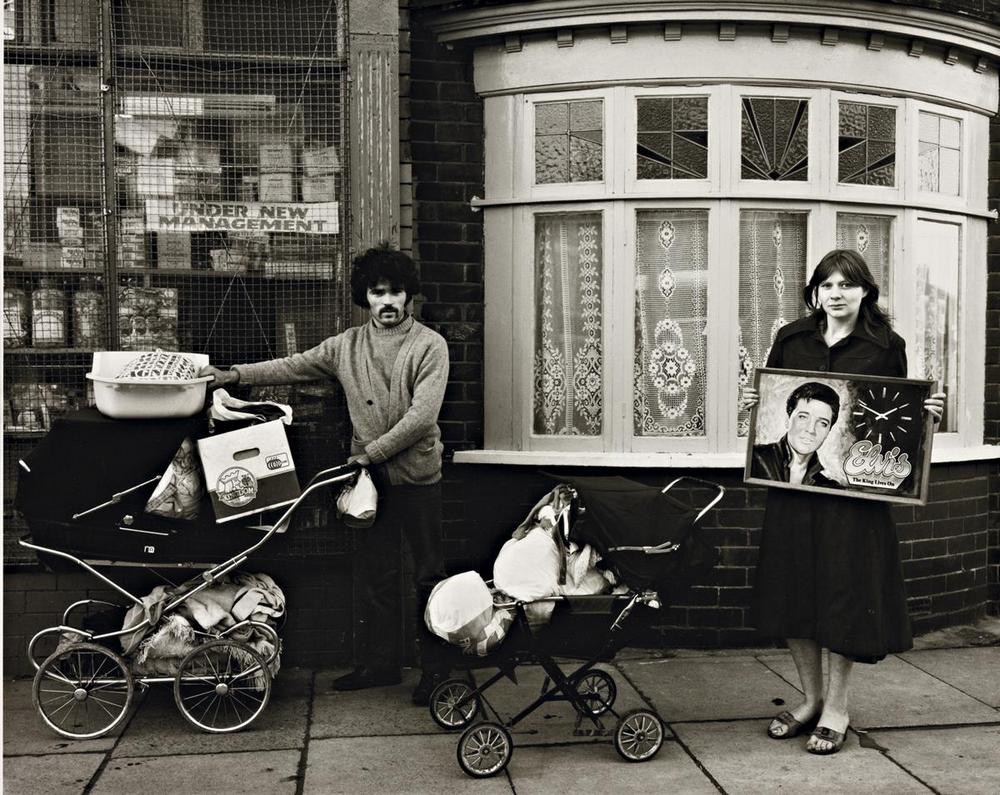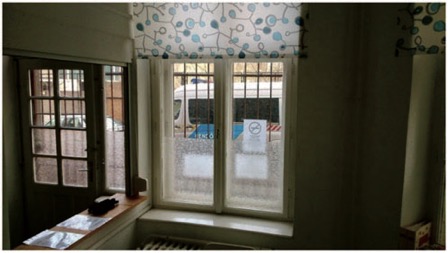Like Len and some others in the group, photography is not a primary economic activity for me, so I am happy to see my work used, even for the commercial benefit of others, with a strong preference for some form of attribution. I would, though, be very unhappy to see my work used to deceive or misinform (this was discussed in detail in Positions and Practice, so no need to reprise that here).
In contributing to the ‘Joywar’ debate I want to pick up on a statement made by Meiselas to justify her initial (legally aggressive) action against Garnett. Meiselas (Garnett and Meiselas, 2007) states that:
‘No one can “control” art, of course, but it is important to me – in fact, it is central to my work – that I do what I can to respect the individuality of the people I photograph, all of whom exist in specific times and places’ (p.56).
She subsequently reinforces this by asserting that:
‘We owe this debt of specificity [of context] not just to one another but to our subjects, with whom we have an implicit contract’ (p.58).
I want to question the extent to which the terms of this implicit contract can ever be met, and therefore, whether it is sustainable for Meiselas, or any other journalist/artist, to make this integral to their practice. If we cannot control, as Meiselas recognises, what others do with the images we make, it would appear that we are very limited in the extent to which we can honour this contract, or, indeed, protect ‘subjects’ (perhaps, more respectfully, participants) from any potential harm that might come to them in the circulation of their image, either in its initial, repurposed or remixed form. This is increasingly problematic with the deployment of AI enhanced facial recognition systems. In gaining the confidence of participants in photographic work, it is increasingly important, then, to make them aware of the potential consequences of participation, and the measures that are being taken by the photographer to reduce the risk of harm. In the case of ‘Molotov Man’, it would appear that minimal effort has been made to manage this risk, and unlikely that this would have been raised with Pablo Arauz at the time (or subsequently). Whilst Meiselas might aspire to show respect for the participant in this way, the implicit contract seems unrealizable and disingenuous. Maybe better to (explicitly) acknowledge, and make clear to participants, that being photographed (particularly by a well-known and high profile photographer) brings risks, and amongst these is the risk that someone might appropriate and/or recontextualize the image and use it for a totally different purpose. This, of course, would make certain forms of photographic practice untenable (a debate for another day). Graham Smith, whose photographs of his own working class community in Middlesborough were the result of a close relationship and trust between him and members of the community, stopped taking photographs after some of his images were used by The Daily Telegraph to denigrate and disparage working class communities (he became an art picture framer – an archive of his photographs, however, with his own hand written notes on the back, is held by the Martin Parr Foundation in Bristol, and well worth looking at).

The photograph objectifies its subject (whatever the expressed intention of the photographer), and the resulting (decontextualized, portable and transmissible) image is commodified, circulated, traded and reconfigured. Institutions, communities and individuals take various ethical positions and make ethically informed decisions in relation to this process, which shapes what is and is not possible and thus shapes their practice. In Meiselas’s case, there is a disjunction between her positioning and her practice (in relation to what is possible: her commitment to the communities is clear and admirable).
In academic social research, expectations regarding ethical practice are distinctly different (a function of the institutionalization of research), not least in being more explicitly expressed and enforced, and somewhat more demanding than expressions of ‘respect’ and ‘implicit contracts’. To gain formal ethical approval, a research proposal would have to elucidate the ways in which risk of harm to participants is minimized. In most cases, this would involve gaining the informed consent of participants and the anonymization of participants in the recording of data and reporting of outcomes. This is clearly problematic in photographic work. Fitzgibbon and Stengel (2018), for instance, in their paper on a study of female drug users and sex workers, which uses a Photovoice style method involving discussion of photographs made by participants, uses pseudonyms and features only photographs where individuals cannot be recognized.

This almost automatic demand for anonymity of participants is questioned, for instance Sinha and Back (2014) raise the issue of truly collaborative research where, ethically, participants would be seen as co-creators of knowledge, and, arguably, should be recognized as co-authors in publication, and therefore identified (but in full knowledge of the potential risks, and gains, of identification). However, the approval of participants to be recognized and identified is not enough. They may not be aware of the potential for harm, and therefore any consents has to be informed (which entails making them fully aware of the consequences, which includes the ‘remixing’ and re-contextualization of their image).
My question here is whether, given the increasing use of images as data, AI enhanced capability to recognize people and link data, and the ubiquity of remixing of images, we should now question, or at least modify, Chalfen’s (2011) distinction between projects and studies. Whilst the rigour and explicitness in collection and analysis of data (whatever form that takes) demanded by the academic study may not hold for the project, the potential risks to the participants are similar, and need to be managed, ethically and practically, which, in turn, will transform what we can and cannot do in the creation and circulation of images.
References
Chalfen, R. 2011. ‘Differentiating Practices of Participatory Visual Media Production’, in Margolis, E. and Pauwels, L. (eds) The SAGE handbook of visual research methods. Los Angeles, Calif: SAGE, pp. 186–200.
Fitzgibbon, W. and Stengel, C. M. 2018. ‘Women’s voices made visible: Photovoice in visual criminology’, Punishment and Society, 20(4), pp. 411–431.
Garnett, J. and Meiselas, S. 2007. On the Rights of Molotov Man: Appropriation and the art of context. Harper’s Magazine, February 2007: 53-58.
Sinha, S. and Back, L. 2014 ‘Making methods sociable: Dialogue, ethics and authorship in qualitative research’, Qualitative Research, 14(4), pp. 473–487.
